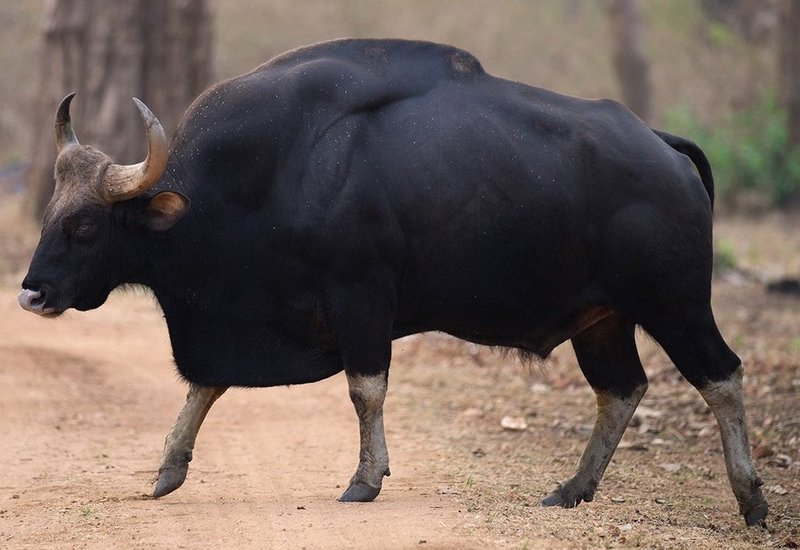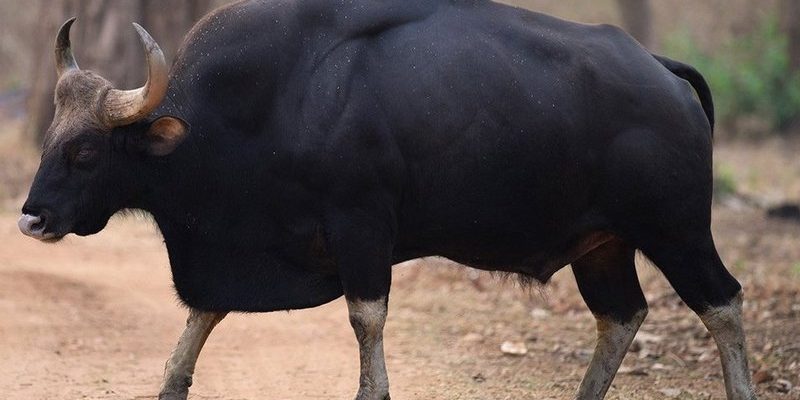
When we talk about the evolutionary history of the gaur, we’re not just discussing its physical changes; we’re diving into how this impressive animal has fit into the ecosystem of South Asia. Imagine the gaur as a giant piece in nature’s puzzle, constantly adjusting to fit in with other species, changing environments, and the challenges that come with survival. So, let’s take a journey through time and explore how the gaur has evolved into the creature we see today.
What is a Gaur?
The gaur, scientifically known as *Bos gaurus*, is one of the largest species of wild cattle. These stunning animals can stand up to six feet tall at the shoulder and weigh over a ton. With their muscular build and distinctive curved horns, gaur are truly impressive to behold. But what makes them stand out even more is their ability to adapt to various habitats, from dense forests to open grasslands.
Gaur are herbivores, primarily grazing on grasses, but they also consume leaves, fruits, and bark. This dietary flexibility has allowed them to thrive in diverse environments across the Indian subcontinent and Southeast Asia. They’re social animals, often found in small herds, which can help protect them from predators like tigers and leopards.
You might be wondering how these gentle giants have evolved over time, changing not just physically but also behaviorally. The evolution of the gaur is a story of resilience and adaptability, shaped by their environment and the challenges they faced throughout history.
Origins of the Gaur
The gaur’s evolutionary journey starts way back in the late Pleistocene era, around two million years ago. They share a common ancestor with other bovids, like domestic cattle, bison, and yaks. As the Earth’s climate and geography changed, these ancestors adapted to various habitats.
During this period, the ancestors of the gaur migrated and evolved, leading to the development of distinct species. The forebears of the gaur began to diverge around 800,000 years ago, adapting to live in the forests and grasslands of Asia. Fossil records suggest that these ancient animals bore a resemblance to modern-day gaur, showcasing traits that have persisted over time.
Isn’t it wild to think about where they started? From small, agile herbivores to the massive creatures we recognize today, the evolutionary history of the gaur reflects the complex dynamics of natural selection. They adapted to their environment, leading to the robust and hardy animals we see today.
Physical Adaptations Over Time
One of the most striking aspects of the gaur is its impressive size and strength, which are results of millions of years of evolution. The gaur’s powerful limbs and large body help it navigate the dense forests of Southeast Asia, allowing it to escape predators and forage for food. Its thick, muscular build provides the necessary endurance for long-distance foraging.
Interestingly, the gaur’s distinctive coat has also evolved. Typically dark brown or black, this coloration helps them blend into their forest habitats, providing camouflage from predators. Young gaur have a lighter brown coat with white markings, which aids in social bonding with the herd.
Another key adaptation is the gaur’s horns. These massive, curved horns not only serve as weapons against potential threats but also play a role in attracting mates. Over time, the size and shape of the horns have evolved, becoming larger and more pronounced, reflecting the animal’s dominance and health. This adaptation is crucial for survival, showcasing how physical attributes can influence reproductive success.
Behavioral Evolution
Just as physical features have changed over time, so too have the behaviors of the gaur. Historically, they were more nomadic, moving in search of food and water. However, as their environments changed and human activities altered their habitats, gaur began to adapt to more sedentary lifestyles, often relying on established feeding grounds.
Social structures in gaur herds also evolved. While they tend to be social animals, the dynamics can vary. In the past, herds were smaller and more fluid, but now they are often more stable, with females forming tight-knit groups for protection and raising young. This shift likely evolved as a response to the increased pressures from predation and habitat loss.
Moreover, their communication methods have adapted. Gaur use a range of vocalizations and body language to communicate with each other, helping maintain social bonds within the herd. Their ability to work together is vital, especially when it comes to avoiding threats. With teamwork at play, they’re able to keep an eye out for one another, enhancing their chances of survival.
The Impact of Human Activity
As humans expanded into gaur habitats, the impact on their evolutionary trajectory became significant. Deforestation, agricultural expansion, and human-wildlife conflict have all contributed to habitat loss and fragmentation. These changes have forced gaur to adapt even further, often leading to smaller populations and increased vulnerability.
Interestingly, the adaptation to human presence has been a double-edged sword. While some gaur have learned to be more cautious and secretive, avoiding human areas, this has also reduced genetic diversity. A smaller population can lead to inbreeding and increased susceptibility to disease.
Conservation efforts are underway to protect these majestic creatures. Establishing wildlife reserves and promoting sustainable land-use practices are essential to ensure the gaur’s continued survival. Here’s the thing: by protecting their habitats, we’re not just preserving a species; we’re also safeguarding the entire ecosystem that relies on the gaur.
The Future of the Gaur
Looking ahead, the future of the gaur is uncertain but not without hope. Conservation programs aim to create safe corridors that allow these animals to roam between habitats, promoting genetic diversity. Educating local communities about the importance of gaur can also play a vital role in their survival.
As climate change continues to affect ecosystems, gaur may face new challenges. Changes in weather patterns could alter the availability of food and water sources, requiring further adaptations. However, if we can address these challenges, there’s still a chance for the gaur to thrive.
Ultimately, the evolution of the gaur is a compelling story of resilience and adaptability. As they’ve navigated the changing landscapes of their environment, these magnificent creatures remind us of the delicate balance of nature. It’s our responsibility to help ensure that the gaur continues its journey in the world we share.
In conclusion, the evolutionary history of the gaur is not merely a chronicle of physical changes but a rich tapestry of adaptation, survival, and interaction with the world around them. Understanding this journey not only deepens our appreciation for these incredible animals but also highlights the importance of preserving their future. Together, we can ensure that the gaur remains a thriving part of our planet’s biodiversity.

